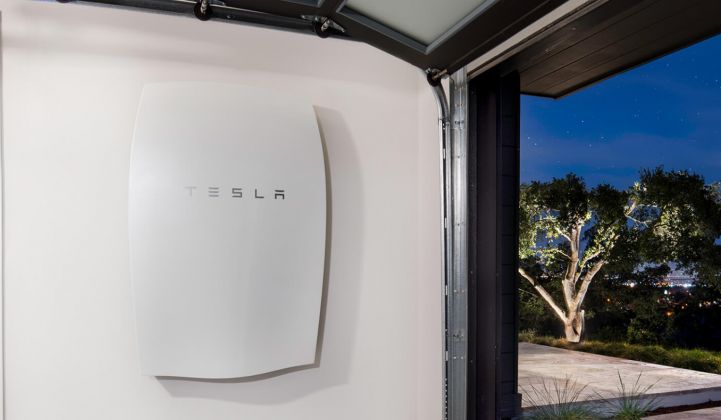Tesla and Vermont utility Green Mountain Power are offering a low price for home backup batteries: $15 per month.
Now they’ve only got to get 2,000 customers to sign up, and make sure they’re capturing the additional grid benefits from each Powerwall 2 to make the price pencil out for the utility.
That’s the plan behind Tesla’s offering, unveiled Friday, to equip Vermonters with emergency backup power during blackouts.
That’s less than half the $37.50 per month that GMP set for its first test-run offering of Powerwalls back in late 2015, after testing Tesla’s technology in a pilot project in Rutland, Vt.
The difference in prices comes from two main sources, according to Josh Castonguay, GMP’s director of generation and renewable innovation. The first is Tesla’s improvement to its promised Powerwall 2.0, and the second is the additional grid benefits available through use of Tesla’s GridLogic software, developed by SolarCity.
Looking first at Powerwall improvements, Castonguay noted that the latest version is “twice the energy, and almost twice the power [of Powerwall 1.0] -- at almost the same cost. Right there, you've doubled your value stream for about the same price.”
This is one of the more specific descriptions of the “step-change” enhancements that Tesla's CEO has promised for its new lithium-ion, inverter-integrated battery unit.
The additional duration of energy packed into the Powerwall 2 is also important to Vermont customers looking to ride out power outages during the state’s cold winters. The older Powerwall units have proven themselves capable of this task, noted Castonguay.
Just last weekend, units installed in Rutland rode through a 14-hour outage, which is about 12 hours longer than the utility’s typical outage duration. But those systems were only running critical loads through a panel installed by an electrician, whereas the Powerwall 2 could conceivably power an entire home through a blackout, he said.
Tesla's platform allows the utility to find additional revenue and cost reduction opportunities from each battery. In its first deployment, GMP was just getting started with distributed battery management, with a more manual and involved process for dispatching each unit that limited flexibility. “We would schedule peak events, and push things out to the devices.”
But with the Tesla aggregation platform, “We won’t just dispatch the batteries for peaks, but take different data -- weather data, load data -- and with algorithms we develop together, predict the right time to maximize these resources and optimize the value,” he said.
“That’s from a regional level -- reducing our costs for transmission and capacity -- or it could be local level, whether it’s T&D or power quality improvements.”
GMP has been working with GridLogic in its Rutland pilot project and has confidence in the software, said Castonguay. “We’ve started to delve into some energy platforms for DERs, but this takes it to the next level."
While he didn’t get into specifics on the additional market values that could be captured with more sophisticated analysis and controls, “it could mean interactions with ISO New England someday,” he said.
GMP will own and operate the batteries, which makes them a capital expense along the lines of distribution poles, wires and transformers. This means that part of the cost of the program, and the low price to customers, is being borne through rates imposed on the rest of its customers.
But the utility has calculated that using Tesla’s batteries and grid software -- plus tapping the smart thermostats, smart water heaters, solar panels and other distributed resources it’s integrating in pilot projects today -- will be cheaper than more typical capital improvements on the distribution system.
“The beauty of this type of program, whether it’s Powerwall or even Powerpack, is that it provides all these reliability benefits, and they pay for themselves through the reliability stream. Other customers -- non-participating customers -- get value, and it doesn’t cost them," he said.
This, of course, will need to be demonstrated in real-world experience. GTM Research's Andrew Mulherkar noted that SolarCity's software is already being tested with utilities, including Pacific Gas & Electric in its San Jose distributed energy resource management pilot.
"We’re sort of ahead of the curve in terms of where FERC and ISO are looking," Castonguay noted.
GMP has an unusual arrangement with Vermont utility regulators that allows it to push through innovative, customer-funded projects like these much faster than most utilities are able to do. But utilities in California, New York, Arizona, Washington state and elsewhere are deploying behind-the-meter batteries in pilot projects today. No doubt they'll all be looking to Vermont to see how the business model plays out with real, live customers.
Listen to this week's episode of The Interchange podcast. Green Mountain Power CEO Mary Powell talks about her unconventional approach to running the utility:



